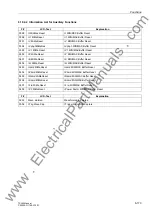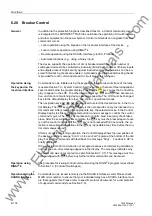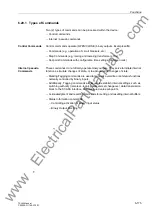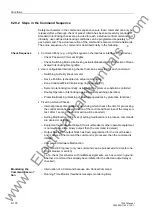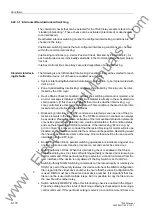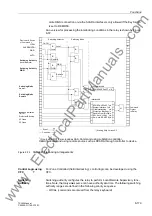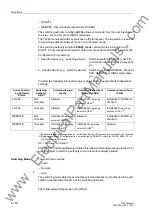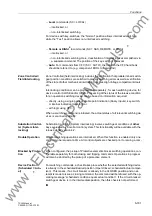
Functions
6-166
7SJ63 Manual
C53000-G1140-C120-1
6.19
Auxiliary Functions
The auxiliary functions of the 7SJ63 relay include:
q
Message Processing
q
Measurements
q
Waveform Capture
6.19.1 Message Processing
After the occurrence of a system fault, data regarding the response of the protective
relay and the measured quantities should be saved for future analysis. For this reason
message processing is done in three ways:
•
LED Display and Binary Outputs (Output Relays)
•
Information via Display Field or Personal Computer
•
Information to a Control Center
LED Display and Bi-
nary Outputs (Out-
put Relays)
Important events and conditions are displayed, using LEDs on the front panel of the
relay. The relay also contains output relays for remote signaling. All LEDs and binary
outputs indicating specific messages can be freely configured . The relay is delivered
with a default setting. The default settings and configuration possibilities are described
in detail in Section 5.2.
The output relays and the LEDs can be operated in a latched or unlatched mode (in-
dividually settable for each one).
The latched conditions are protected against loss of the auxiliary voltage. They are re-
established after restart of the device. However they can be reset as follows:
−
On site by pressing the LED key on the relay.
−
Remotely using a binary input.
−
Using one of the serial interfaces.
−
Automatically at the beginning of a new pickup.
Condition messages should not be stored. Also, they cannot be reset until the criterion
to be reported is cleared. This applies to messages from monitoring functions, or sim-
ilar.
A green LED displays operational readiness of the relay, and cannot be reset. It goes
out if the self-check feature of the microprocessor recognizes an abnormal occur-
rence, or if the auxiliary voltage is lost.
When auxiliary voltage is present, but the relay has an internal malfunction, then the
red LED (ERROR) lights up and the processor blocks the relay.
Fault Information
Display or Personal
Computer
Events and conditions can be read out on the display on the front cover of the relay.
Using the front PC interface or the rear service interface, for instance, a personal com-
puter can be connected, to which the information can be sent.
www
. ElectricalPartManuals
. com






















